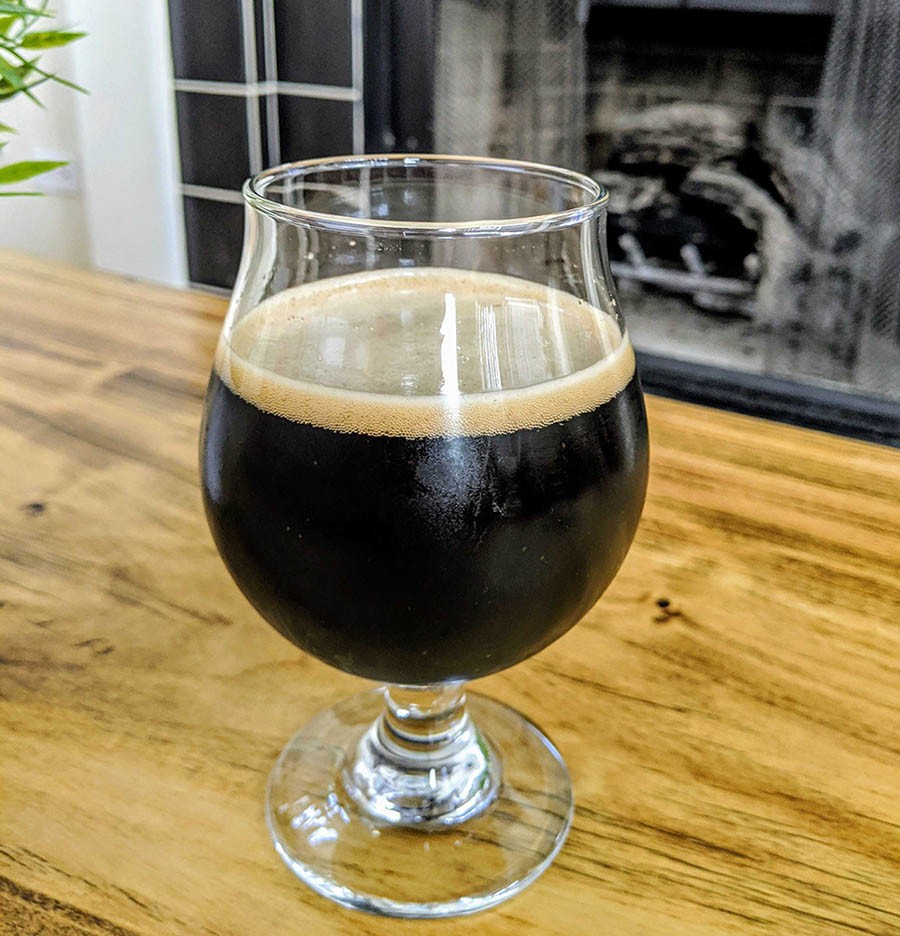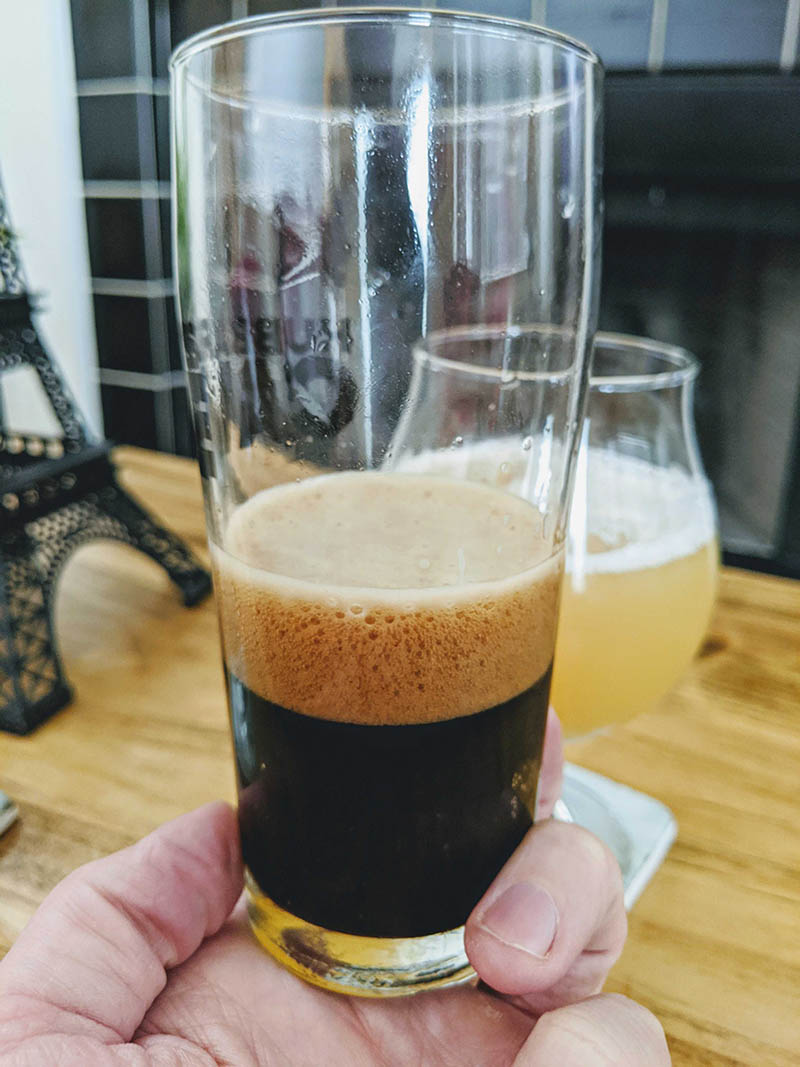
When my mother in law asked for a second pint of this stout 10 minutes after the first, I knew I had something good on my hands. I won't tell you how my family gathers around stouts on Christmas today, let's just get into the recipe and some tips to make it your own.
There are several keys to making a chocolate stout, and a few more that can contribute to a sensation similar to eating chocolate. Think about eating chocolate - when the chocolate melts, it coats your mouth and has a very thick texture. I was able to replicate this to a good extent using these guidelines:
Optional guidelines for a thicker stout
This recipe creates a nice, easy-drinking stout that isn't very roasty or astringent. It's thick and chocolatey, this is the base stout that I go back to for creating a few different adjunct beers. I knew I hit the jackpot when someone said that this beer tastes like chocolate cake, even though I added hazelnuts and wanted more of a Nutella type beer.
Grist
61% Maris Otter
22% Flaked Oats
5.0% Crisp Pale Chocolate
3.0% Black Malt
2.7% Simpsons Double Roasted Crystal
2.3% Crisp Brown Malt
2.3% Honey Malt
1.3% Carafa III
(Optional - increase Black Malt to 5% for a roaster version of this recipe)
Other
3.5% Lactose
2.5% Maltodextrin
Cacao nibs: toast 1oz/gallonat 300F until your oven starts smelling really chocolatey. This takes 5-10 minutes for most kinds of nibs. Add the nibs to secondary right after toasting. Some folks make a vodka tincture, but for this many nibs, you'll need a whole lot of vodka that might offset the flavor of the stout.
Numbers
OG: 1.090
FG: 1.028
Wyeast 1318
Hops: EKG (20 IBU)
Water Chemistry: Ca 151; Mg 22; Na 43; Cl 200; SO4 65; pH 5.3
Notes
Ferment for 2 weeks at 66-68F to avoid significant ester production. Let condition in keg for 2 weeks.
60 minute boil is standard for me, although longer boil times will add more caramel notes.
 Chocolate Hypothesis, in all its glory. Scroll down for the story behind the name.
Chocolate Hypothesis, in all its glory. Scroll down for the story behind the name.Chocolate malt is primarily a roasted malt that was actually named for its color, rather than the flavor. While these types of malt do have some dark chocolate flavors, they're not predominant and the mostly adds roasted flavors due to its roast level and color (flavor wheel here). Personally, I get espresso and moderate roasted flavors from these malts, unless I'm using Crisp Pale Chocolate malt. This is the malt featured in my recipe, and in combination with a few Brown and Honey malts, it will get you what you're looking for.
While the recipe above isn't necessarily meant to be a milk stout, lactose helps bring out the milk chocolate flavor, rather than just cacao/bitter dark chocolate flavors that the cacao nibs and pale chocolate malt add. If you're looking for less of a milk stout, step up the Black Malt in the recipe and replace lactose with a little maltodextrin.
Personally, I like adding lactose little by little after I have kegged the beer if I think that it needs more sweetness. Even then, I often use maltodextrin blended with lactose to add more body and thickness, as opposed to just sweet flavors.
Some online research about one of the original Chocolate stouts, Samuel Smith's, has a few notes that the recipe features chocolate syrup, rather than cacao nibs. I've also seen a few brewers suggest using various amounts of chocolate syrup to get the flavors you need in a stout. It's more pricey than cacao nibs, which is likely why it's not as popular, but certainly worth a shot on homebrew level.
After brewing up about 10 various stouts ranging from KBS clone to random recipes from Reddit, I had realized that my stouts are all ending up too bitter and astringent. My hypothesis was that if I reduce the IBU's, reduce the amount of roasted malts and slightly increase the sweetness (higher final gravity and sometimes lactose), then I'll end up with a delicious stout that everyone can enjoy.
This was certainly a departure from BJCP guidelines for imperial stouts, but it was the arrival into the world of adjunct stouts. What I ended up with is some of the most decadent, smooth, and malty beers I have ever had. I hope you enjoy them as much as I do.
You can find a few more recipes over in the Pastry Stout article or the How to Brew with Maple piece.
 Tasting one of the iterations of Hypothesis with 4% roasted barley. This one got cacao nibs and peanut butter.
Tasting one of the iterations of Hypothesis with 4% roasted barley. This one got cacao nibs and peanut butter.
If you brew this up, let me know how it turns out! Happy brewing!